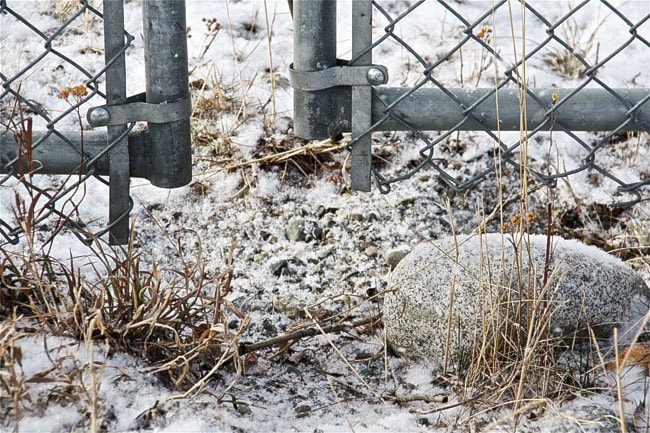The recent killing of a fox at the Whitehorse airport has some people questioning what is being done to keep wildlife from entering the property in the first place.
After reading letters to the editor about the controversy, Whitehorse resident Rob MacKay decided to go to the airport and see the fence for himself.
He saw holes in the fence that were easily large enough for a fox or coyote to travel through. And he took plenty of photos as proof.
Given Whitehorse’s reputation as “the Wilderness City,” the airport should have a proper wildlife fence, he said.
This year, there have been 62 wildlife encounters at the airport, said Allan Nixon, assistant deputy minister of transportation. Of those, 50 animals - mainly foxes and coyotes - have been chased away. Five animals were live-trapped and relocated, and seven were killed by conservation officers, he said.
Many of the animals have lost their fear of being near people, said Nixon.
But MacKay wonders what is being done to make sure the animals can’t get onto the property in the first place.
“These animals are getting onto the airport whether they’re being fed or not, that’s not the issue to me,” said MacKay, who has seen people feeding foxes. His main concern is about airport safety, he said.
The chain-link security fence that surrounds the airport meets all Transport Canada standards, said Nixon. The 2.1-metre-high fence is inspected at least weekly, he said.
The department is discussing how to best reduce wildlife encounters at the airport with conservation officers, he said. They are looking at possibly changing the fence, but it would cost millions of dollars to replace, he said.
The fence around the perimeter is 13 kilometres long. And some damage to the fence is caused by vandals, not animals, he said.
Both Dawson City and Old Crow have fences surrounding their airports designed to keep out wildlife. These fences are dug into the ground and set in concrete, rather than only going to ground level, as Whitehorse’s airport fence does.
Dawson and Old Crow built these fences with federal funds earmarked for such projects.
The Whitehorse airport applies for this funding quite regularly, said Nixon. But these resources aren’t a “bottomless pit,” he said.
And new rules introduced about four years ago makes it tougher for airports to tap federal funds for wildlife fences. Old Crow and Dawson received their money before this rule change, said Nixon. Now, priority is given to safety measures like aircraft firefighting equipment and runway improvements, he said.
“The flipside of keeping all the animals out is you’re also preventing an animal that does get in from getting out,” he said. Staff have seen foxes climb over the fence in the winter, said Nixon. “There will never be a perfect fence,” he said.
Contact Meagan Gillmore at
mgillmore@yukon-news.com
